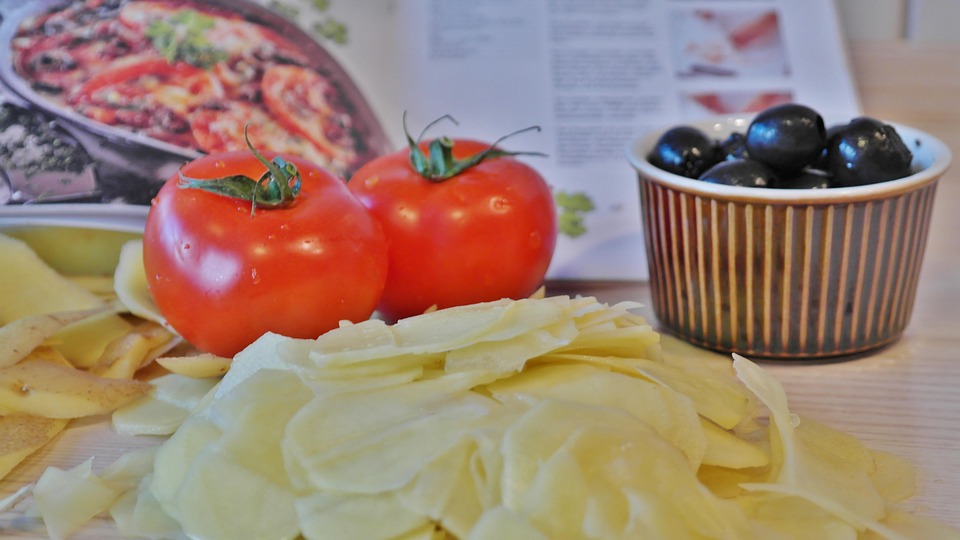Discover the Secrets of a Balanced Japanese Diet: Healthy Recipes to Try

[ad_1]
Discover the Secrets of a Balanced Japanese Diet: Healthy Recipes to Try
The Japanese diet is renowned not only for its delicious flavors but also for its impressive health benefits. Rooted in simplicity and balance, this culinary tradition emphasizes fresh ingredients, seasonal produce, and harmonious flavors. Whether you’re looking to enhance your well-being or simply explore new culinary horizons, embracing elements of the Japanese diet can be a rewarding journey. Here, we’ll unveil the secrets of a balanced Japanese diet and share some healthy recipes to try at home.
Understanding the Japanese Diet
At the core of the Japanese diet is the concept of *shokuiku*, which translates to “food education.” This philosophy encourages mindfulness in eating and emphasizes the importance of wholesome, nutrient-dense foods. Key components of a balanced Japanese diet include:
1. **Rice as a Staple**: Instead of bread or pasta, rice, particularly brown or short-grain rice, is a fundamental part of meals.
2. **Variety of Vegetables**: Seasonal vegetables play a critical role, with an emphasis on leafy greens, root vegetables, and pickled options like *tsukemono*.
3. **Fish Over Meat**: The Japanese diet favors fish, rich in omega-3 fatty acids, over red meat. Grilled or steamed fish is a common protein source.
4. **Fermented Foods**: Foods like miso, soy sauce, and pickles are staples, contributing to gut health and overall wellness.
5. **Portion Control and Presentation**: Meals are often served in small portions, promoting balance and preventing overeating. The aesthetic presentation of food is also significant, enhancing the dining experience.
Healthy Japanese Recipes to Try
Now that you have a glimpse into the principles of the Japanese diet, here are some simple yet nutritious recipes to incorporate into your meals.
Miso Soup
*Ingredients:*
– 4 cups dashi broth (or vegetable stock)
– 3 tablespoons miso paste
– 1 cup tofu, cubed
– 1 cup seaweed (wakame), soaked and drained
– 2 green onions, sliced
*Instructions:*
1. In a pot, bring the dashi broth to a gentle simmer.
2. In a small bowl, mix the miso paste with a few tablespoons of the hot broth until smooth, then add it back to the pot.
3. Stir in the tofu and seaweed, and simmer for 5 minutes.
4. Garnish with sliced green onions before serving.
Vegetable Tempura
*Ingredients:*
– 1 cup assorted vegetables (sweet potatoes, zucchini, bell peppers, etc.)
– 1 cup tempura batter mix
– 1 cup cold water
– Oil for frying
*Instructions:*
1. Heat oil in a deep pan over medium heat.
2. In a bowl, mix the tempura batter with cold water until lightly combined (lumps are fine).
3. Dip the vegetable pieces into the batter and carefully place them in the hot oil.
4. Fry until golden brown, then remove and drain on paper towels.
Salmon Teriyaki
*Ingredients:*
– 2 salmon fillets
– 1/4 cup soy sauce
– 2 tablespoons mirin (sweet rice wine)
– 1 tablespoon sugar
– 1 teaspoon grated ginger
– Sesame seeds for garnish
*Instructions:*
1. In a small bowl, mix soy sauce, mirin, sugar, and ginger to create the teriyaki sauce.
2. Marinate the salmon fillets in the sauce for at least 30 minutes.
3. Preheat a skillet over medium heat and cook the salmon for about 4-5 minutes on each side, basting with the marinade.
4. Garnish with sesame seeds before serving.
Brown Rice with Vegetables
*Ingredients:*
– 1 cup brown rice
– 2 cups water
– Assorted vegetables (carrots, peas, bell peppers)
– 1 tablespoon soy sauce
– Green onions for garnish
*Instructions:*
1. Rinse the brown rice under cold water and combine it with water in a pot.
2. Bring to a boil, then reduce the heat to low, cover, and simmer for about 40-45 minutes.
3. Meanwhile, sauté the assorted vegetables in a separate pan until tender.
4. Once the rice is cooked, mix in the sautéed vegetables and soy sauce, and garnish with green onions.
Conclusion
Incorporating elements of the Japanese diet into your daily meals can lead to improved health and well-being. The focus on fresh ingredients, balanced nutrition, and mindful eating creates a harmonious relationship with food. Try these delicious recipes to experience the flavors and benefits of a balanced Japanese diet, and you may find yourself feeling more energized and satisfied. Embrace the journey towards healthier eating habits and savor the richness of Japanese cuisine!
[ad_2]



